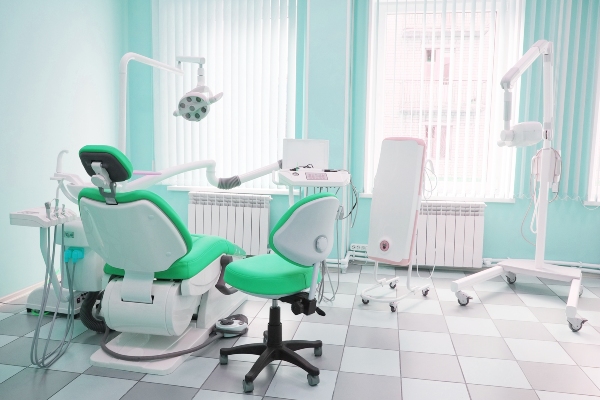Understanding Orthodontic Options: Braces, Aligners, and Beyond

Orthodontics is concerned with realigning the teeth and jaw, such as with braces or aligners. A general dentist can discuss several orthodontic treatments, helping patients explore their options. Learning about what each orthodontic option involves can help patients or their caregivers choose the one best suited to smile goals and lifestyle preferences.
Common orthodontic options
Orthodontic care includes a variety of treatments designed to straighten teeth, correct bite issues, and improve jaw alignment. Each method works differently, but all share the same goal of creating a healthier, more balanced smile. With multiple options available, a general dentist can customize orthodontics to fit the lifestyle and preferences of each patient.
Despite common misconception, orthodontics is not limited to children or teens. Adults are never too old to work toward a straighter, more picture-perfect smile. From traditional braces to clear aligners, modern options make achieving a straighter smile for patients of all ages more accessible than ever before.
Metal braces
Traditional metal braces continue to be one of the most reliable orthodontic options for correcting smile alignment. Made from high-grade stainless steel brackets and wires, they steadily guide teeth into proper position. Their strength makes them especially effective for managing complex bite issues like overbites, underbites, crossbites, and crowding.
Today’s metal braces are designed with greater comfort in mind. The brackets are smaller, less bulky, and more comfortable than in the past, while still delivering excellent treatment outcomes. Patients can also customize their braces with colorful elastic bands for a fun, personalized element to the process.
Discreet types of braces
For patients seeking a less noticeable option, ceramic braces and lingual braces provide effective alternatives. Ceramic braces use tooth-colored or clear brackets that blend more naturally with the smile. They are less visible than traditional metal braces but function in the same way: using wires and brackets to shift teeth into place.
On the other hand, lingual braces sit on the inner side of the teeth, facing the tongue. This positioning makes them practically invisible from the outside, though they may take more time to adjust to in terms of comfort and speech. Although they are less common, lingual braces provide a discreet solution to bite issues without compromising treatment effectiveness.
Clear aligners
Clear aligners are another discreet approach to orthodontics. They are custom-made, removable trays that gradually shift teeth into alignment without the need for brackets or wires. Their nearly invisible appearance and convenience appeal to many adults, teens, and even preteens.
Unlike fixed braces, aligners can be removed for eating, brushing, and flossing. This flexibility supports better oral hygiene during treatment and allows for fewer dietary restrictions. Because of these advantages, many patients find clear aligners to be a comfortable and practical choice.
A general dentist can help patients explore discreet orthodontics if appearance is a primary concern. With the variety of choices now available, orthodontic treatment can be tailored to meet both practical needs and personal preferences.
Other orthodontic treatments
Beyond braces and aligners, orthodontics includes additional treatments that support healthy bite function and jaw alignment. Expanders, for example, are devices used to widen the upper jaw, often in younger patients whose bones are still developing. This can create more space for teeth to align properly and reduce the need for tooth extractions later.
A general dentist may recommend other orthodontic appliances, such as headgear or elastics, to guide jaw growth or correct bite imbalances. These options demonstrate how orthodontics extends beyond straightening teeth to address overall oral harmony. Note that they are typically used in more severe cases.
Retainers are another critical part of orthodontic care. After active treatment ends, retainers keep teeth in their new positions and prevent relapse. Both fixed and removable retainers help maintain treatment results for years to come.
Finding the right approach to orthodontics
Selecting the most suitable orthodontic treatment involves careful evaluation of oral health, lifestyle, and personal goals. The severity of the alignment issue, desired treatment time, and preference for discreet options factor into the decision-making process. For instance, clear aligners may be ideal for those seeking flexibility, while metal braces may be necessary for more complex cases.
No matter the choice, the ultimate goal remains the same: creating a healthy, functional, and confident smile. With so many orthodontic options available, patients can find an approach that fits seamlessly into their daily lives.
Schedule a consultation for more information
Interested in orthodontics? The first step is a consultation to review oral health and treatment goals. With modern braces, aligners, and appliances now more comfortable and discreet, there is no need to put off orthodontics. Contact our Castle Rock team to schedule a consultation.
Request an appointment here: https://www.foundersdental.com or call Founders Dental at (720) 893-7362 for an appointment in our Castle Rock office.
Check out what others are saying about our dental services on Yelp: Orthodontics in Castle Rock, CO.
Recent Posts
Dental health requires routine care and, at times, immediate attention. While a general dentist provides preventive and restorative treatments, an emergency dentist can address urgent dental issues. Understanding the differences between these practitioners can help you get the care you need based on your unique needs and situation.A general dentist focuses on overall oral health,…
When sudden dental issues arise, visiting an emergency dentist is the best course of action for immediate treatment. Ignoring oral pain or trauma can lead to more serious complications, making immediate treatment essential. Whether caused by injury, infection, or a lost restoration, certain dental emergencies require prompt care to relieve discomfort and protect oral health.…
Your dentist is your partner in maintaining oral health and overall wellness. Not every type of dentist is exactly alike though. A family dentist is a special type of dentist that can see all the members, both young and old, of an entire family. Finding a family dentist to partner with your entire family is…
A cosmetic dentist is a great resource to utilize when looking to undergo teeth whitening. Their background in general dentistry means patients can receive care that is focused on both the form and function of the mouth. While the mouth's function is not affected by teeth whitening, the form can definitely be! When it comes to teeth…


